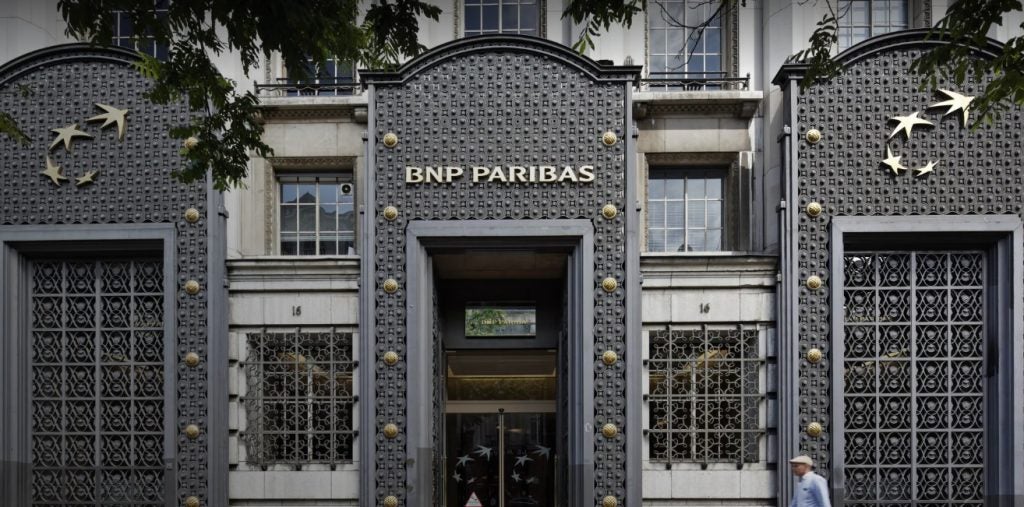Nordea’s international
private banking arm is dwarfed by its Nordic wealth unit, but an
increased Swiss client base, along with plans to launch in
Singapore, are set to push Nordea’s brand of sound and solid
stewardship wider. Nicholas Moody reports.
 Nordic bank Nordea has
Nordic bank Nordea has
been a beneficiary of the loss in trust in many European banks as
new clients have bulked up its wealth management asset base
steadily. Since 2009, client assets under management (AuM) have
increased from €125bn ($166bn) to €187bn. This steady base has
given the Nordic region’s largest bank resources to acquire and
expand.
Its latest client base boost
came in October last year when Nordea’s Luxembourg-based subsidiary
bought part of Danish bank Sydbank’s private banking client base in
Switzerland for an undisclosed sum.
Given all the high cost of
business, not to mention glaring US regulatory scrutiny, why would
a stable, largely conservatively-geared Nordic bank want to buy
into such a difficult market?
As Jhon Mortensen, head of
international private banking at Nordea, says in order to create a
market there’s a need for both buyers and sellers.
How well do you really know your competitors?
Access the most comprehensive Company Profiles on the market, powered by GlobalData. Save hours of research. Gain competitive edge.

Thank you!
Your download email will arrive shortly
Not ready to buy yet? Download a free sample
We are confident about the unique quality of our Company Profiles. However, we want you to make the most beneficial decision for your business, so we offer a free sample that you can download by submitting the below form
By GlobalData“I think you should see this
Sydbank acquisition as part of our broader strategy. We have been
able to continue our expansion in international private banking.
Based on the group’s but also on our Nordic values,” he
says.
Mortensen points to Nordea
Group’s AA rating which has meant its international private banking
division has the resources to fund the Sydbank
acquisition.
The acquisition is
technically a selective client buy-out. Due to be completed this
quarter, it involves taking over Sydbank’s clients on a highly
selective basis, plus two client advisers. Clients indicate that
they are happy to be transferred and then Nordea approves each
client individually to ensure they are fully transparent on tax and
comply with anti-money laundering rules.
 Nordea’s steady
Nordea’s steady
approach to investing and solid rating has seen AuM slowly climb
over the past few years; although it’s 2011 levels dropped, bucking
this trend. Mortensen says this dip reflects the deleveraging many
clients were continuing to pursue in 2011.
Nordic private banking AuM
stood at €51.4bn at the end of 2011, while AuM in its international
division was €9.6bn, down €400m when compared to the same quarter
in 2010, but up from €8.7bn in the fourth quarter of 2009. Net
inflows for 2011 stood at €100m.
International growth has in
the past focused on the Nordic community in Northern Europe,
Luxembourg and Switzerland – about 60% of its clients are of Nordic
origin. Now Nordea is eyeing a completely new market, Asia, albeit
focused on the same clients. Nordea has applied to the Monetary
Authority of Singapore for a banking licence and hopes it will be
approved in 2012.
“Our starting point [in
Singapore] is also our Nordic base. And what we can see is that
Asia is an increasingly important market. There is a surprising
amount of Nordic people moving to Asia, even staying there,” says
Mortensen.
Nordea estimates the size of
the Nordic ex-pat community in Asia is somewhere between 15,000 and
16,000 families. Nordea’s plan is to follow its Nordic client base,
with the view to extend it to non-Nordic clients once its Asian
operations are well established.
Mortensen is excited about
Nordea’s Asian base, having spent three years there establishing a
branch for SDS, one of the original banks Nordea was created
from.
“I was based in Singapore
many years ago, and at that time people went back to Europe from
Asia after only two years in order to not lose their career path.
Nowadays you can see that people go out [to Asia] and make their
careers and retire there. There is a momentum [in Asia],” he
says.
Mortensen says any internal
targets for the projected size of the business are
confidential.Despite Nordea’s static asset base in 2011, Mortensen
is positive about the outlook for 2012 and expects AuM to grow, but
is conscious that client attitudes to risk have shifted
seismically.
 “We are nowhere near
“We are nowhere near
back to the risk appetite that we used to have and I wonder whether
we will come back to that,” he says. “I think this crisis is so
deep that it will take a considerable time before you come back to
anything looking like before the crisis.”
Like many other private
banking heads, the brake on this optimism is the cost of doing
business, especially around complying with the ever-expanding list
of regulations.
“[Nordea] has the firm principle that we want to live up
to whatever regulations there are in the marketplace. But these
regulations are increasing and it is becoming increasingly
difficult to live up to them. The licences to operate are
increasingly costly, meaning that just to stand still you have to
grow.”







